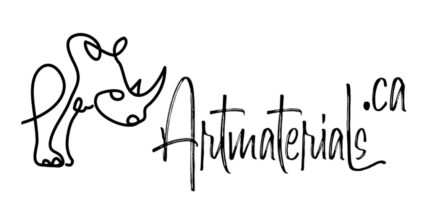- You have no items in your shopping cart
- Continue Shopping

Once, I had a conversation about paints while was doing demo for artists. I mentioned that pigments used in a brand that I was showing had natural and synthetic, as well as organic and inorganic pigments. And when I said “organic” there were 2 opposite reaction among some artists. One was saying “Never buy organic pigments as they have low lightfastness”, while the other exclaimed that “Organic pigments are a great thing as they are natural, pure and safe”. Needless to say that none of the statements is true.
When we talk about pigments, not dyes, generally we have two big groups: natural and synthetic (man-made).
Natural pigments
And when we say “natural” debates and misunderstanding begin. The phrase “natural pigment” has two meanings. The first one goes to origin of a pigment and literally refers to substances that are derived from natural sources, such as minerals, plants and insects. In other words, natural pigments can be devided into mineral pigments and biological pigments.
Mineral pigments are the best ones use in terms of their application and archival properties. Earth pigments, such as ochres, umbers, iron oxides are my favourite. They are high in chroma, go inside any binder seamlessly, non-toxic, and provide the highest lightfastness. Although differently treated earth pigments can vary in colour from yellow through red to deep black, providing different transparency index, they don’t have intense yellow, red or blue colours in their arsenal.
And here we go to cadmiums and cobalts, mineral pigments with very strong colours. However, the beauty has its price: cadmiums and cobalts are quite toxic to work with and also a way of extracting and producing of the pigments not always ethical (child labour may be involved). That was a reason, why we, RUSART, are not using cadmiums and cobalts in our paints, with the only exception to turquoise blue that comes from France and from responsible vendors.
On top of all these, cadmiums and cobalts are quite expensive. Some manufactures introduce safer minerals as pigments (we will also do that in 2023). This solves a problem with colour and safety, but not with prices.
Biological pigments is the right term to describe natural pigments derived from plants or animal cells. When used in paints, these pigments will have a N index. For example, NO6 is Natural Orange 6 and stands for Henna, and NB1 is Natural Blue 1, which is Indigo. Plant-based pigments are still in the market, but normally have low lightfastness and mostly replaced by manufactured pigments in paint industry.
The most famous pigment that comes from animals is NY20 – Indian Yellow. It was made from urine of cows that were fed with mango leaves. This pigment is a history now as not allowed anymore and all Indian yellow colours are just hues. Many other biological pigments that are not plant-based got prohibited or restricted for paint-manufacturing.
Synthetic pigments
Synthetic pigments are man-made and more and more paints are made of them. The most famous ones are ultramarine, phthalo blue and green, hanza yellow, naphthol reds, quinacridones etc.
Organic and inorganic refers to chemistry and have nothing with “organic food”. Organic pigments contain carbon and hydrogen, while inorganic pigments do not deal with carbon-based substances.
I personally don’t like organic pigments as they need to have something to stick to to become a true pigment. That’s why they are very popular in paint-making industries now as only a little bit of pigment is needed to create a strong by appearance colours, and all the rest (70-95%) can be just a filler. That’s why RUSART is in search of true pigments that can go with binder without fillers. Our concept of filler-free paints is incompatible with most of organic pigments. For now, we’re mixing them with inorganic pigments to achieve our goals and keep experimenting.
Inorganic synthetic pigments are very pleasant to work with. They work like natural mineral pigments and provide smooth results without fillers added. These pigments include Ultramarine (PB29), Prussian Blue (PB27) and others.
We’re still working on our paint formulas that allow us avoid fillers and provide better and genuine experience of colour.




